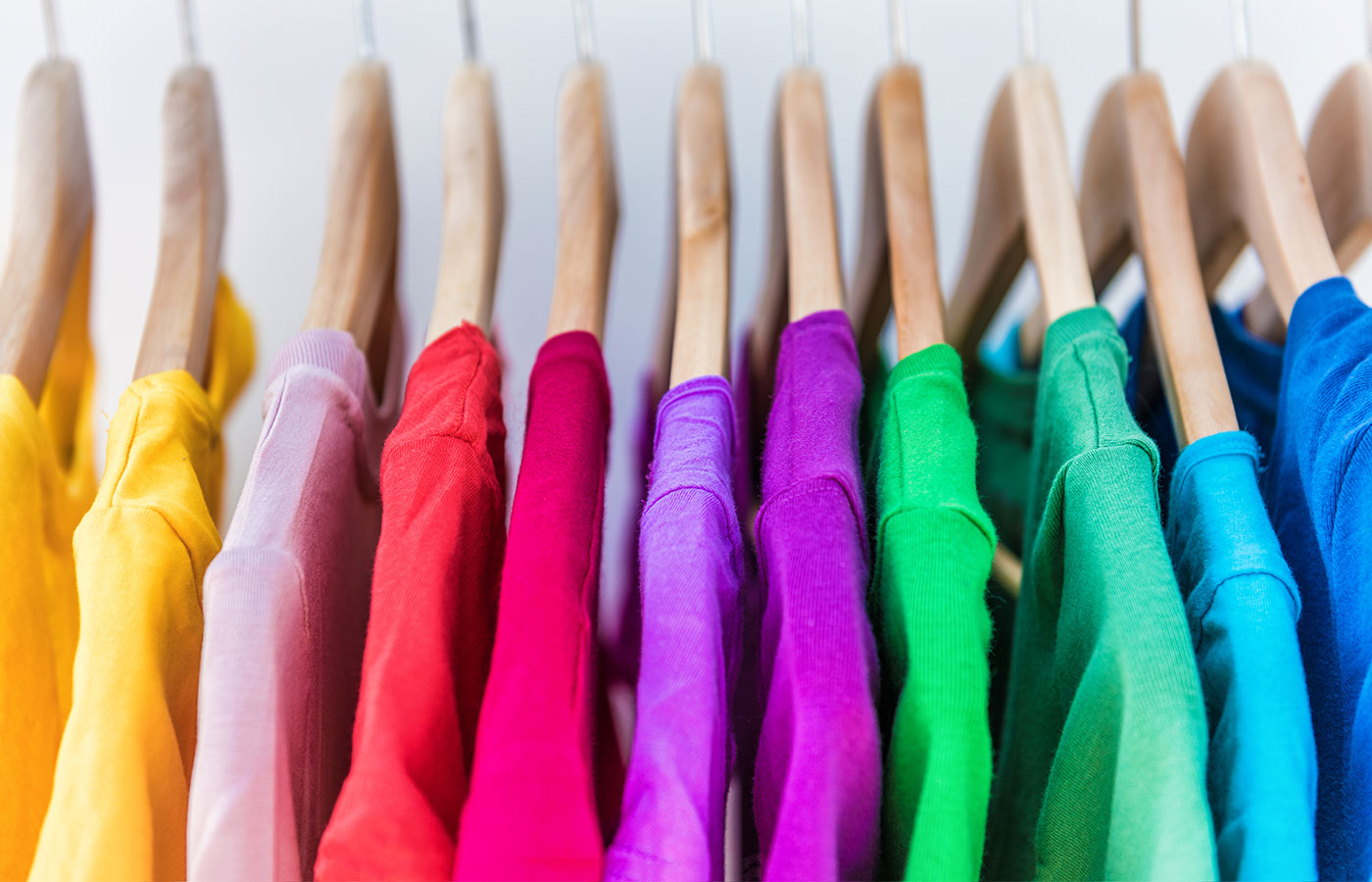How Branded Clothing Combines Fit, Function, and Fabric Innovation
How Branded Clothing Combines Fit, Function, and Fabric Innovation
Blog Article
Recognizing Apparel: The Significance of Textile Choices in Your Wardrobe
The option of material in apparel plays a crucial role in both appearances and capability. Different products use differing degrees of comfort, longevity, and breathability, straight affecting the wearer's experience. Understanding these nuances can boost one's wardrobe substantially. Yet, lots of ignore how these choices can impact not just personal design, yet also sustainability. What material choices could redefine your wardrobe and align it with both style and responsibility?
The Duty of Fabric in vogue and Functionality

Common Material Kinds and Their Characteristics
When choosing clothes, recognizing the characteristics of typical textile types is important for making educated options. Cotton, a widely-used natural fiber, is known for its versatility, softness, and breathability, making it suitable for sportswear and daily garments. Linen, one more natural option, boasts excellent moisture-wicking residential properties and an unique structure, ideal for cozy climates.Wool, usually preferred for its warmth and longevity, differs in fineness; merino wool is soft against the skin, while coarser types are used for outerwear. Synthetic textiles like polyester and nylon provide toughness and resistance to creases, making them prominent for activewear and travel garments. Lastly, blends, which incorporate artificial and natural fibers, can boost performance while maintaining convenience. By acknowledging these textile attributes, people can select clothing that aligns with their way of living and visual choices.
Breathability and Convenience: Selecting the Right Fabrics for Various Environments
Selecting the best fabrics for different climates can greatly enhance comfort and total wearability. Breathable materials are important in warm climates, as they permit air flow and wetness evaporation. Fabrics such as cotton, linen, and moisture-wicking synthetics effectively attract sweat away from the body, maintaining the wearer cool and dry. Alternatively, in colder environments, thicker fabrics like wool or fleece give insulation while preserving breathability, ensuring heat without overheating.Additionally, the selection of textile weight plays a vital duty; lightweight materials are preferable for summertime, whereas heavier options are matched for winter season wear. Recognizing the one-of-a-kind homes of each textile makes it possible for people to clothe suitably for varying weather condition conditions. Inevitably, picking comfy and breathable materials tailored to certain environments can substantially improve day-to-day comfort and boost the general experience of wearing apparel.
Longevity and Treatment: Exactly How Textile Influences Longevity of Your Closet
Selecting the ideal materials can considerably influence the sturdiness and care needs of a closet. Fabrics such as cotton and polyester are understood for their strength and simplicity of upkeep, making them suitable for day-to-day wear. In contrast, delicate materials like silk and lace require even more mindful handling and specialized cleansing techniques, which can enhance the moment and initiative required for care. Branded Clothing.Durability is also influenced by the textile's weave and coating; firmly woven textiles have a tendency to resist damage much better than loosely woven alternatives. In addition, artificial blends often give improved toughness, integrating the finest high qualities of multiple fibers.Understanding the treatment directions for each fabric is vital, as improper cleaning or drying out can lead to early wear. Eventually, choosing long lasting products can cause a longer-lasting closet, minimizing the frequency of replacements and contributing to a more lasting fashion choice
The Effect of Fabric on Fit and Silhouette

Sustainable Fabric Selections: Making Eco-Friendly Decisions
The effect of material prolongs beyond fit and silhouette to include ecological aspects, triggering an expanding rate of interest in sustainable material options. Environment-friendly textiles, such as natural cotton, hemp, and Tencel, are acquiring traction amongst consumers that focus on sustainability in their closets. These products are often generated with fewer chemicals and water, lowering their eco-friendly footprint.Additionally, recycled visit here textiles, made from post-consumer waste, provide a cutting-edge solution to the fabric market's pollution issue. Brands significantly welcome openness in their sourcing techniques, permitting consumers to make educated decisions concerning their purchases.Choosing lasting materials not just sustains ethical techniques however likewise motivates the fashion business to embrace more liable production approaches. As recognition of environmental problems increases, people are prompted to show on the lasting influence of their textile selections, cultivating an activity in the direction of a more sustainable and environmentally conscious approach to fashion.
Elevating Style: How Material Can Change an Attire
While lots of may concentrate on shade and cut when picking an attire, the option of textile plays a necessary role in elevating style and enhancing general appearance. Different materials convey unique moods and messages; for example, silk emanates high-end and elegance, while denim uses a casual, loosened up ambiance. The texture and drape of a fabric can significantly alter the shape, with organized materials supplying a polished appearance and softer ones creating a more fluid, unwinded aesthetic.Moreover, the weight of the fabric affects wearability across seasons. Lightweight materials like linen and cotton are ideal for summertime, while much heavier materials such as woollen and velvet offer heat and elegance in colder months. Understanding textile residential or commercial properties, such as breathability and stretch, additionally equips people to make informed choices that enhance convenience without jeopardizing design. Ultimately, the appropriate material can change an attire from regular to amazing, making it an important consideration in any look at these guys kind of wardrobe.
Regularly Asked Questions
Exactly how Do I Recognize the Textile Web Content of My Clothing?
To recognize fabric material, one can examine care labels, conduct shed tests for fiber recognition, or seek advice from fabric swatches. These techniques help distinguish products, guaranteeing notified selections for clothes treatment and upkeep in daily wear.
Can Textile Selection Affect My State Of Mind or Self-confidence?
Fabric choice can greatly affect a person's mood and confidence. Branded Clothing. Certain products may evoke feelings of convenience or beauty, while others can really feel unflattering or restrictive, inevitably affecting self-perception and psychological wellness throughout the day
What Fabrics Are Best for Delicate Skin?
For individuals with delicate skin, natural fabrics like bamboo, cotton, and bed linen are typically advised. These products are breathable, hypoallergenic, and less likely to cause irritation, making them suitable choices for comfort and skin health.
How Do I Appropriately Wash and Take Care Of Various Fabrics?
To properly clean and care for various textiles, one must think about each product's certain needs, consisting of temperature level setups, cleaning agents, and drying out methods, making sure durability and maintaining the fabric's initial top qualities for suitable use.
Are There Certain Fabrics for Athletic or Performance Put On?
Athletic or efficiency wear usually utilizes fabrics such as polyester, spandex, and nylon. These products are developed for moisture-wicking, breathability, and flexibility, improving movement and comfort throughout physical activities while offering resilience and assistance. On the other hand, in cooler environments, thicker textiles like woollen or fleece blog offer insulation while preserving breathability, making certain heat without overheating.Additionally, the option of material weight plays a crucial role; lightweight fabrics are better for summer season, whereas larger choices are fit for wintertime wear. In contrast, delicate products like silk and lace call for more mindful handling and specialized cleansing methods, which can raise the time and effort needed for care.Durability is also affected by the fabric's weave and coating; snugly woven textiles have a tendency to withstand wear and tear far better than loosely woven alternatives. In comparison, rigid fabrics can restrict activity but give a classic, polished look.Moreover, the density and appearance of the textile can influence the aesthetic understanding of body form. The influence of fabric expands past fit and silhouette to include environmental elements, motivating an expanding interest in sustainable textile choices. The structure and drape of a textile can considerably change the silhouette, with organized fabrics providing a sleek look and softer ones producing a more fluid, unwinded aesthetic.Moreover, the weight of the textile influences wearability across seasons.
Report this page